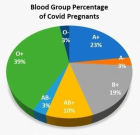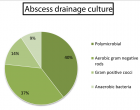Abstract
Research Article
Clinical picture of pulmonary plague observed in the paediatric wards of antananarivo
Rivo Lova Herilanto Rakotomalala*, Lovasoa Randriamanga, Mihary Soa Karol, Mioramalala Sedera Aurélien and Annick Lalaina Robinson
Published: 13 May, 2021 | Volume 4 - Issue 1 | Pages: 046-049
Introduction: In Madagascar, plague is a highly contagious acute endemic infectious disease. The diagnosis of the most severe form of pneumonic plague remains difficult in children, hence the objectives of the present study; which is to identify the clinical signs of this clinical form in children and to describe its epidemiological and evolutionary profile.
Methods: A retrospective case-control study was conducted in four pediatric wards in Antananarivo during the urban pneumonic plague outbreak from September 2017 to January 2018.
Those cases were defined as children aged 0-15 years old suspected of having plague with positive RDT and PCR, and they were defined as children aged 0-15 years old with negative RDT and PCR.
Results: Fifty-two cases of pneumonic plague were identified, half of which (50%) were under 24 months of age.
A male predominance was noted with a sex ratio of 1.23 and 86.54% of the patients were from urban areas.
Several clinical signs were found but none was specific for pneumonic plague: cough (59.62% p: 0.5), dyspnea (3.85% p: 0.16), chest pain (3.85% p: 0.26%), hemoptysis (7.69% p: 0.17), vomiting (9.62% p: 0.14), diarrhea (11.54% p: 0.45), altered general condition (38.46% p: 0.24%).
Two deaths were noted (3.8%).
Conclusion: No specific clinical warning signs have been identified in childhood pneumonic plague. In the event of an epidemic of urban pneumonic plague, any bacterial pneumonia should at least initially include active treatment against Yersinia pestis.
Read Full Article HTML DOI: 10.29328/journal.japch.1001031 Cite this Article Read Full Article PDF
Keywords:
Clinical; Child; Pneumonic plague
References
- French language infectious pathology society. Online Infections. 2001; 1: 8-11.
- Aubry P. The plague in India. A century after the discovery of the bacillus by A. Yersin. Med Trop.1994; 54: 289.
- Epidemiology and management of plague epidemics in the Mediterranean during the Second World War. History of Medecine. 2004.
- Infectious diseases. Encycl Med Chir. 8-039-V-20. 2001; 8.
- Ratsitorahina M, Chanteau S, Rosso ML, Randriambelosoa J, Ratsifasoamanana L, et al. Epidémiological aspects of plague in Madagascar. Arch Inst. Pasteur Madagascar. 2002; 68: 51-54. PubMed: https://pubmed.ncbi.nlm.nih.gov/12643093/
- Chanteau S, Nato F, Migliani R. The value of rapid tests chromatography for the surveillance of epidemic diseases in developing countries by immuno: the example of plague in Madagascar. Med Trop. 2003; 63: 574-576.
- Pasteur Institute of Madagascar. Plague Atlas in Madagascar, 2004. - OMS. The plague. REH. 2005; 80: 138-140.
- Mann JM, Shandler L, Cushing AH. Pediatric Plague. Pediatrics. 1982; 69: 762-767.
- Bin Saeed AA, Al-Hamdan NA, Fontaine RE. Plague from Eating Raw Camel Liver. Emerging Infect Dis. 2005; 11: 1459-1457. PubMed: https://pubmed.ncbi.nlm.nih.gov/16229781/
- Arbaji A, Kharabsheh S, Al-Azab S, Al-Kayed M, Amr ZS, et al. A 12-case outbreak of pharyngeal plague following the consumption of camel meat, in north-eastern Jordan. Ann Trop Med Parasitol. 2005; 99: 789-793. PubMed: https://pubmed.ncbi.nlm.nih.gov/16297292/
- Becke TMP, Poland JD, Quan TJ, White ME, MD, et al. Plague Meningitis-A Retrospective Analysis of Cases Reported in the United States, 1970-1979. West J Med. 1987; 147: 554-557. PubMed: https://pubmed.ncbi.nlm.nih.gov/3424819/
- Patrice D, Jean-Paul GE. Pilly, Infectios and tropical diseases, Alinéa Plus. 2018; 328.
- World Health Organization. Plague around the world: 2010-2015. REH. 2016; 91: 89-92.
- Léon KN, Mbombo D, Nduwa K, Aimé AM, Nathalie KK, et al. Acute respiratory infection and nutritionalstatus in children 0-5 years: case of university clinics of Lubumbashi. Democratic Republic of Congo. Pan Afr Med J. 2014; 19: 393.
- World Health Organization. Human plague: review of regional morbidity and mortality, 2004-2009. Wkly Epidemiol Rec. 2010; 85: 40-45. PubMed: https://pubmed.ncbi.nlm.nih.gov/20151494/
- Bulter TH. Plague gives surprises in the first decade of the 21st century in the United States and worldwide. Am J Trop Med Hyg. 2013; 89: 788-793. PubMed: https://pubmed.ncbi.nlm.nih.gov/24043686/
Figures:

Figure 1
Similar Articles
-
Congenital poisoning after maternal parenteral mercury administrationBenjamin Courchia*,Leventer Roberts Maya,Meyer John,Galvez Maida,Herrera Jaime,Rauch Daniel. Congenital poisoning after maternal parenteral mercury administration. . 2018 doi: 10.29328/journal.japch.1001001; 1: 001-005
-
The Impact of Adenotonsillectomy on Health-Related Quality of Life in Paediatric PatientsShuaib Kayode Aremu*. The Impact of Adenotonsillectomy on Health-Related Quality of Life in Paediatric Patients. . 2018 doi: 10.29328/journal.japch.1001002; 1: 006-011
-
Prevalence of ESBL urinary tract infection in childrenKhalil Salameh*,Galia ZA Awean,Hala Elmohamed,Hoor Alshmayt,Mohamed Riad Bur Omer . Prevalence of ESBL urinary tract infection in children. . 2019 doi: 10.29328/journal.japch.1001004; 2: 004-007
-
Glycemic status and its effect in Neonatal Sepsis - A prospective study in a Tertiary Care Hospital in NepalBadri Kumar Gupta*,Binod Kumar Gupta,Amit Kumar Shrivastava,Pradeep Chetri. Glycemic status and its effect in Neonatal Sepsis - A prospective study in a Tertiary Care Hospital in Nepal. . 2019 doi: 10.29328/journal.japch.1001006; 2: 015-019
-
Branchio Oculo Facial SyndromeMaha Oudrhiri*,Toualouth L,Houda Oubejja,Fouad Ettayebi,Hicham Zerhouni. Branchio Oculo Facial Syndrome. . 2019 doi: 10.29328/journal.japch.1001007; 2: 020-020
-
Current childhood cancer survivor long-term follow-up practices in South AfricaAnel van Zyl*,Mariana Kruger,Paul C Rogers. Current childhood cancer survivor long-term follow-up practices in South Africa. . 2020 doi: 10.29328/journal.japch.1001008; 3: 001-007
-
Aripiprazole-induced seizures in children with autism spectrum disorder and epilepsyMohammed MS Jan*. Aripiprazole-induced seizures in children with autism spectrum disorder and epilepsy. . 2020 doi: 10.29328/journal.japch.1001009; 3: 008-010
-
Case-based education to improve learning and faculty teaching of residents and students in a clinical settingDiane E Lorant*,Elizabeth A Wetzel. Case-based education to improve learning and faculty teaching of residents and students in a clinical setting. . 2020 doi: 10.29328/journal.japch.1001010; 3: 011-015
-
So-called idiopathic scoliosis – disfiguring deformity in children, pain problems in adults. Information about biomechanical etiology, classification and therapyTomasz Karski*. So-called idiopathic scoliosis – disfiguring deformity in children, pain problems in adults. Information about biomechanical etiology, classification and therapy. . 2020 doi: 10.29328/journal.japch.1001011; 3: 016-020
-
“Syndrome of Contractures and Deformities” according Prof. Hans Mau. Symptoms, diagnosis, treatment: Recommendations for parentsTomasz Karski*,Jacek Karski. “Syndrome of Contractures and Deformities” according Prof. Hans Mau. Symptoms, diagnosis, treatment: Recommendations for parents. . 2020 doi: 10.29328/journal.japch.1001012; 3: 021-023
Recently Viewed
-
Metastatic Brain Melanoma: A Rare Case with Review of LiteratureNeha Singh,Gaurav Raj,Akshay Kumar,Deepak Kumar Singh,Shivansh Dixit,Kaustubh Gupta*. Metastatic Brain Melanoma: A Rare Case with Review of Literature. J Radiol Oncol. 2025: doi: 10.29328/journal.jro.1001080; 9: 050-053
-
Validation of Prognostic Scores for Attempted Vaginal Delivery in Scar UterusMouiman Soukaina*,Mourran Oumaima,Etber Amina,Zeraidi Najia,Slaoui Aziz,Baydada Aziz. Validation of Prognostic Scores for Attempted Vaginal Delivery in Scar Uterus. Clin J Obstet Gynecol. 2025: doi: 10.29328/journal.cjog.1001185; 8: 023-029
-
Scientific Analysis of Eucharistic Miracles: Importance of a Standardization in EvaluationKelly Kearse*,Frank Ligaj. Scientific Analysis of Eucharistic Miracles: Importance of a Standardization in Evaluation. J Forensic Sci Res. 2024: doi: 10.29328/journal.jfsr.1001068; 8: 078-088
-
A study of coagulation profile in patients with cancer in a tertiary care hospitalGaurav Khichariya,Manjula K*,Subhashish Das,Kalyani R. A study of coagulation profile in patients with cancer in a tertiary care hospital. J Hematol Clin Res. 2021: doi: 10.29328/journal.jhcr.1001015; 5: 001-003
-
Additional Gold Recovery from Tailing Waste By Ion Exchange ResinsAshrapov UT*, Malikov Sh R, Erdanov MN, Mirzaev BB. Additional Gold Recovery from Tailing Waste By Ion Exchange Resins. Int J Phys Res Appl. 2024: doi: 10.29328/journal.ijpra.1001098; 7: 132-138
Most Viewed
-
Evaluation of Biostimulants Based on Recovered Protein Hydrolysates from Animal By-products as Plant Growth EnhancersH Pérez-Aguilar*, M Lacruz-Asaro, F Arán-Ais. Evaluation of Biostimulants Based on Recovered Protein Hydrolysates from Animal By-products as Plant Growth Enhancers. J Plant Sci Phytopathol. 2023 doi: 10.29328/journal.jpsp.1001104; 7: 042-047
-
Sinonasal Myxoma Extending into the Orbit in a 4-Year Old: A Case PresentationJulian A Purrinos*, Ramzi Younis. Sinonasal Myxoma Extending into the Orbit in a 4-Year Old: A Case Presentation. Arch Case Rep. 2024 doi: 10.29328/journal.acr.1001099; 8: 075-077
-
Feasibility study of magnetic sensing for detecting single-neuron action potentialsDenis Tonini,Kai Wu,Renata Saha,Jian-Ping Wang*. Feasibility study of magnetic sensing for detecting single-neuron action potentials. Ann Biomed Sci Eng. 2022 doi: 10.29328/journal.abse.1001018; 6: 019-029
-
Pediatric Dysgerminoma: Unveiling a Rare Ovarian TumorFaten Limaiem*, Khalil Saffar, Ahmed Halouani. Pediatric Dysgerminoma: Unveiling a Rare Ovarian Tumor. Arch Case Rep. 2024 doi: 10.29328/journal.acr.1001087; 8: 010-013
-
Physical activity can change the physiological and psychological circumstances during COVID-19 pandemic: A narrative reviewKhashayar Maroufi*. Physical activity can change the physiological and psychological circumstances during COVID-19 pandemic: A narrative review. J Sports Med Ther. 2021 doi: 10.29328/journal.jsmt.1001051; 6: 001-007

HSPI: We're glad you're here. Please click "create a new Query" if you are a new visitor to our website and need further information from us.
If you are already a member of our network and need to keep track of any developments regarding a question you have already submitted, click "take me to my Query."















































































































































